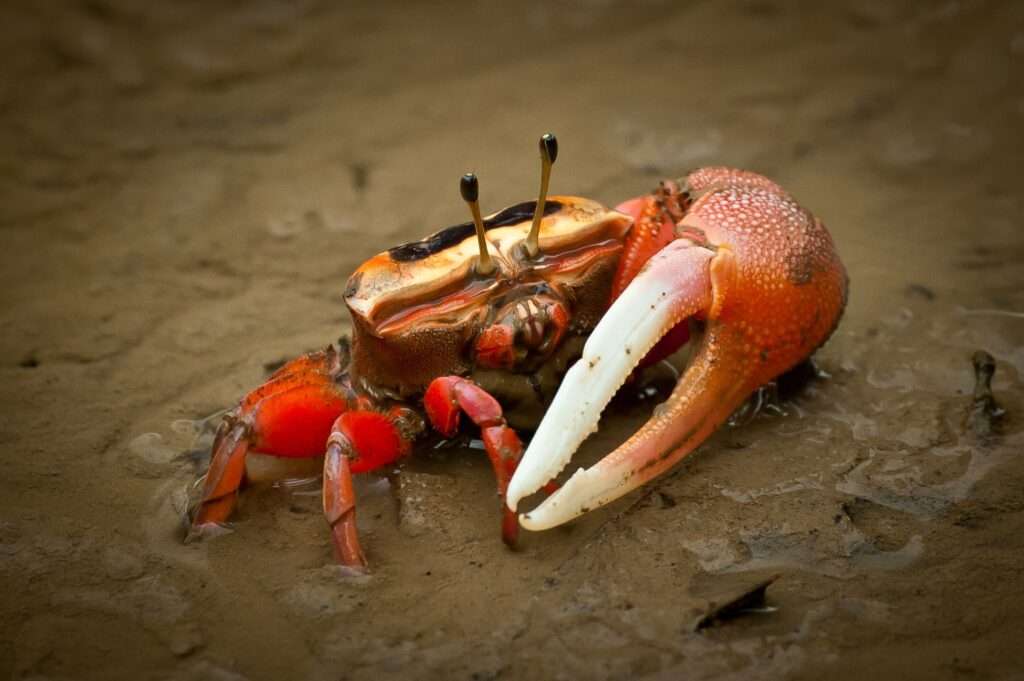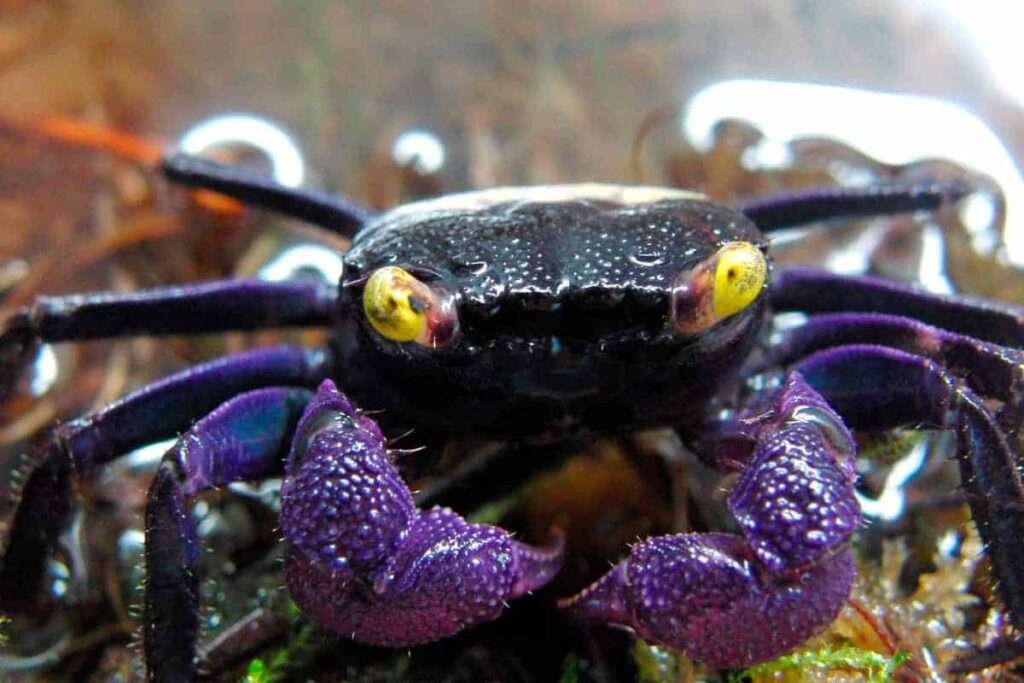
With a smooth carapace and a square-shaped body, all Marble crabs are similar in appearance. In the middle of the carapace, at the tips of two moveable eyestalks, are their eyes.
Adult Marble crabs are only 1.5 to 2.5 cm (0.5 to 1 inch) long on average (shell width). They barely measure 4 to 5 cm across the leg span (1.5 – 2 inches).
You might be amazed by how many color morphs these brightly coloured decapods have, despite the fact that their popular name comes from the carapace’s greenish coloring.
Habitat
There are many places in the Indo-Pacific where marble crabs can be found, including Zanzibar, Madagascar, the southern Ryukyu Islands (Iriomote and Miyako islands), Guam, New Guinea, Kerala, India, Sri Lanka, Christmas Island, the Indonesian archipelago, the Philippines, Kerala, India, and Tahiti.
As is characteristic for the islands north of Borneo, these crabs are frequently recorded from islands with broad gravel or sandy plains devoid of rivers or freshwater sources.
Marble crabs are frequently found in a remote location of terrestrial boulders away from the shore. The crabs spend the day hiding under coral or stone.
They also live in mangrove swamps and prefer the protection and cover of a thick forest floor.
Keeping as Pet

Feed
Scavengers by nature, marble crabs. They will consume anything they can find because they are omnivores and opportunistic eaters. They are content to spend their entire day exploring the tank and looking for food.
Marble crabs will consume debris, leaf litter, seeds, and other things in captivity. However, feeds should contain protein at a level of roughly 60–70% of the diet for the optimum growth. Marble crabs need a lot of protein because they are not vegetarians.
It’s an interesting observation that these crabs devour many insects, including flies and mosquitoes.
Taking Care of Marble Crab
Compared to many other invertebrates, caring for marble crabs is fairly simple. Decapods are low-maintenance pets that adapt well to life in captivity and can generally maintain their health.
Of course, you still have to take care of their basic requirements! If you want these creatures to be content and healthy, you must provide them with a particular specialized environment.
Tank Size
The Marble crabs attach importance to tank size. They enjoy a variety of terrain to hide in and hide from things like unwelcome attention or sunshine. They are territorial and like room to roam around. A 5-gallon (20-liter) tank is the bare minimum advised tank size for a couple of Marble crabs—one male and one or two females. Do not underestimate it; overcrowding is a significant cause of stress for crabs. It may eventually result in health issues and aggressive behavior. This is crucial because males are more aggressive when there are more of them. In a straightforward 10-gallon (40 L) tank, a group of up to 4–5 crabs can live extremely contentedly. This kind of tank might be useful for you.
Temperature
The ideal temperature range is between 75 and 82°F (24 to 28°C), with temperatures between 71 and 86°F (22 and 30°C) being acceptable.
Humidity
Marble crabs should not be housed in a dry tank because they are accustomed to high humidity surroundings. They require wet, damp air to breathe effectively. They also require a damp hiding area, as this is where they hide out when it’s time to molt, sleep, or relax. The ideal humidity range is between 70 and 90 percent.
Lighting
No unique conditions. Nighttime is when marble crabs are active. In order to meet the needs of the plants in the paludarium or terrarium, illumination should be adjusted.
Table





